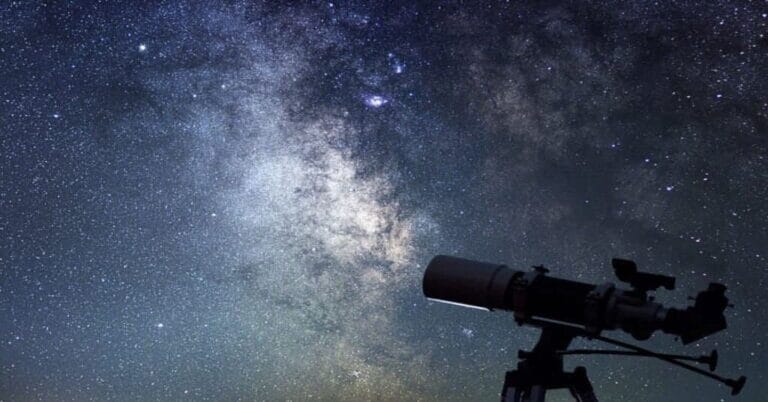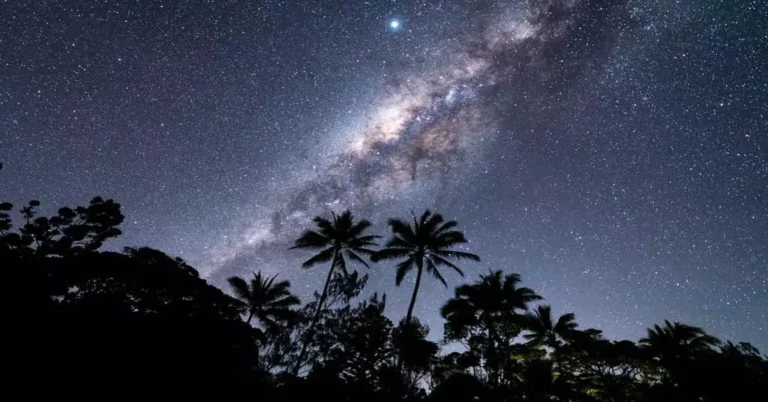Your Night Sky Photography Gear Guide – Tips and Tricks
Have you ever found yourself staring at a sky full of twinkling stars and thought about taking a picture? Well, you totally can! Night sky photography might sound tricky, but don’t worry; with the right stuff and a few tips, you’ll be snapping amazing shots of the Milky Way before you know it.
This guide will help you determine what gear you need for your stargazing photo journey. But before we get into that, let’s discuss why taking pictures of the night sky is so cool!
Why Photograph the Night Sky?
There’s something truly magical about capturing the Milky Way across the dark canvas of the night sky. It reminds us how tiny we are in the big universe. Night sky photos show us things we can’t see with our eyes, like the soft glow of faraway nebulae or the colourful streaks of shooting stars. It’s a bit tricky initially, but the amazing sights you’ll capture make it worth it!
Planning Your Night Sky Escape
Before you grab your gear and head out, think about some things. The main challenge for night sky photos is light pollution. The more light around, the harder it is to see the stars. So, aim for a place with dark skies. You can find helpful maps online that show where light pollution is less of a problem, away from city lights.
Also, consider the time of year and the weather. You’ll want clear skies with no clouds to get the best view. It’s also ideal to go when there’s a new moon because there’s less moonlight to compete with the stars.
Essential Gear for Night Sky Photography
Now, let’s get down to the fun part – the gear! Here are the key things you’ll need:
Camera:
You want a camera with a big sensor because it can capture more light, which is important for taking photos of faint stars. Full-frame or APS-C cameras are good choices. Some recommended models are the Nikon D850 or Sony A7R series. They might be pricier, but they produce less grainy photos.
Wide-aperture lens:
The aperture of a lens is like the eye’s pupil. A wide aperture, like f/2.8 or lower, lets in more light, helping you capture sharper images faster. Recommended lenses include Nikkor 14-24mm f2.8 or Nikon 80-400mm f4.5/5.6. The lens you choose depends on what kind of night sky photos you want to take.
Tripod:
It would help to have a powerful tripod to keep your camera still during long exposures and avoid blurry photos from even the slightest movement. Make sure to get one that can support your camera and lens well.
Remote Shutter Release:
Pressing the camera button can cause vibrations, which blur your photos. A remote shutter release lets you take photos without touching the camera, reducing shake and keeping your photos sharp. You can find these at most camera stores.
Expanding Your Astrophotography Arsenal (Optional)
Tracking Mount: If you’re serious about taking pictures of faraway things like galaxies and nebulae, a tracking mount is super helpful. It automatically moves your camera to match the Earth’s rotation, so your stars stay sharp in long exposure shots.
Star Tracker: If a tracking mount seems too pricey, a star tracker is a smaller, more portable option. It helps counteract the Earth’s rotation for shorter exposure photos.
Headlamp Red Light: Having a headlamp with a red light setting is essential when you’re out in the dark. It helps you see without messing up your night vision, which can take about 20 minutes to adjust fully.
Making Your Night Sky Photos Shine: Post-Processing
Now, let’s talk about post-processing! Special software enhances night sky photos. It helps bring out faint star details and reduces graininess. Another trick is stacking images, combining several exposures to make your photos sharper and clearer.
So, there you have it! With the right gear, planning, and some post-processing know-how, you’ll be snapping stunning night sky photos before you know it. Remember, it’s all about practice, so don’t worry if your first shots aren’t perfect. Keep trying, and you’ll be amazed at what you can create!
Conclusion
So, that’s it! The night sky is ready for you to capture its beauty. With the gear we discussed, some planning, and some post-processing tricks, you’ll soon be a master of night sky photography. But here’s the big question: Are you ready to enter the world of stars and create stunning images?
FAQs
Can I use a smartphone to take night sky photos?
While possible, smartphones generally have smaller sensors and slower lenses than dedicated cameras. This makes capturing faint details in the night sky challenging. However, some newer smartphone models have improved camera capabilities and might be suitable for basic nightscapes.
Full frame vs APS-C sensor: Which is better?
Full-frame sensors offer the most light-gathering capability, which is ideal for astrophotography. However, APS-C sensors are still great options, especially for beginners, as they are often more affordable. You can achieve stunning results with an APS-C camera and a wide-aperture lens.
Do I need a mirrorless camera for astrophotography?
DSLRs and mirrorless cameras can both be excellent choices for night sky photography. Mirrorless cameras might offer some advantages, such as silent shooting modes, which can help minimize vibrations. However, the sensor size and overall image quality are the most important factors.
Do I need a special lens for astrophotography?
While any wide-aperture lens can work, some lenses specifically designed for astrophotography offer improved internal coatings to minimize aberrations during long exposures. However, these lenses can be quite expensive.
Can I use a monopod for night sky photography?
While monopods offer some stability, they are generally not recommended for astrophotography due to their inherent wobble. Tripods provide much better overall stability for long-exposure shots.







